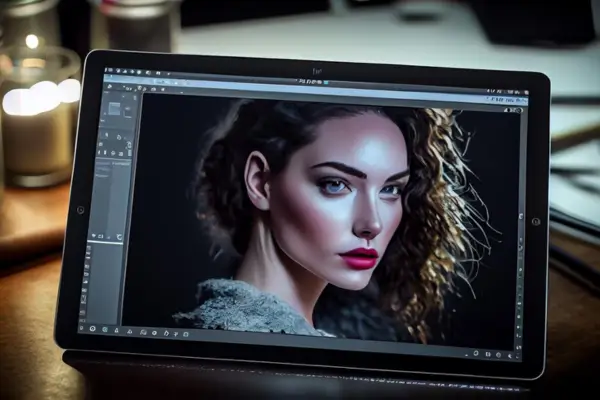In today’s visually-driven world, photo editing plays a crucial role in a variety of industries, from photography and design to marketing and social media. Whether you’re creating stunning visual content for a brand, retouching portraits, or crafting graphics for digital campaigns, the right photo editing software can make all the difference. With so many options available, it’s essential to choose a tool that suits your skill level and specific needs.
For beginners, the focus is on ease of use, intuitive interfaces, and basic features that make photo editing accessible without overwhelming them. On the other hand, professionals require advanced tools that offer complete control over every detail of their images, enabling them to create high-quality, polished results.
In this article, we’ll explore the best photo editing software for both beginners and professionals, helping you find the perfect fit based on your experience level and the type of editing you need to do. Whether you’re just starting or you’re a seasoned pro, we’ve got you covered!
What to Look for in Photo Editing Software
When selecting photo editing software, the needs of beginners and professionals can vary significantly. Understanding these differences can help you choose the right program that suits your skill level and goals.
For Beginners
If you’re just starting with photo editing, the software you choose should have a simple and intuitive interface. You’ll want to avoid overwhelming yourself with complex features. Look for software that provides basic tools like cropping, color correction, and filters, which will be sufficient for most beginner edits.
Also, affordability is an important factor for beginners. Opting for software with a low-cost or free version can help you experiment with editing without committing to a large financial investment. Many beginner-friendly programs also offer pre-made templates, making it easier to create polished photos or social media posts with minimal effort.
For Professionals
For professional photographers and graphic designers, photo editing software needs to be feature-rich with advanced editing tools. Look for software that offers precision editing capabilities such as layers, masks, advanced retouching, and support for RAW file formats. These tools are essential for high-quality editing and fine-tuning images to a professional standard.
Customization is another crucial factor for professionals. You’ll want software that allows you to adjust preferences, create custom workflows, and adapt the interface to your specific needs. Moreover, professionals often work with various file types (JPEG, TIFF, PNG, etc.), so file compatibility is key for smooth editing across different platforms.
Importance of System Compatibility
Regardless of whether you’re a beginner or a professional, it’s essential to consider the system compatibility of the software. Some programs are designed for specific operating systems (Mac or Windows), and others may also offer mobile versions or apps for tablets and smartphones. If you work on multiple devices, make sure the software supports cross-platform usage to streamline your workflow.
For instance, if you’re often on the go, a mobile-compatible photo editor might suit your needs. However, if you require more robust tools for professional-grade editing, desktop software may be the better choice. Always ensure that the software runs smoothly on your device to avoid technical glitches or delays in your editing process.
Choosing the right photo editing software depends on your individual needs, skill level, and workflow. Whether you’re just starting out or you’re a seasoned professional, it’s crucial to select software that complements your editing style and enhances your creative process.

Best Photo Editing Software for Beginners
When you’re just starting in the world of photo editing, it’s important to choose software that’s both accessible and effective. Below are some of the best photo editing tools for beginners, offering ease of use and powerful features without overwhelming you.
Adobe Photoshop Express
Overview of its basic tools and features
Adobe Photoshop Express is a simplified version of the industry-standard Photoshop. It offers a user-friendly interface with essential editing tools like cropping, rotating, adjusting brightness, contrast, saturation, and adding filters. The app also includes basic retouching features like blemish removal and red-eye correction, making it perfect for quick edits.
Pros and cons for beginners
Pros:
- Simple interface that’s easy to navigate for beginners.
- Powerful yet straightforward editing tools.
- Syncs across devices, so you can edit on the go.
Cons:
- Lacks some of the advanced features of its more professional counterpart.
- Requires an Adobe account to access some features.
- Limited compared to full Photoshop.
Why it’s great for simple edits
Photoshop Express is ideal for beginners who need to make quick adjustments or apply basic edits without delving too deeply into complex features. It’s a great choice for enhancing photos for social media or personal projects.
Canva
Simple, user-friendly interface for beginners
Canva is one of the most popular design tools on the market and it’s especially great for beginners. It’s designed with simplicity in mind, providing an intuitive drag-and-drop interface that doesn’t require any previous experience. With Canva, you can quickly create stunning visuals with minimal effort.
Templates and drag-and-drop features
Canva offers an extensive library of templates for social media posts, presentations, posters, and more. You can easily drag and drop images, text, and graphics into these templates to customize them to your liking. Its photo editing tools are perfect for basic image adjustments, such as resizing, filters, and cropping.
Ideal for social media posts and basic photo edits
For beginners looking to create eye-catching posts for Instagram, Facebook, or Pinterest, Canva is a fantastic choice. Its photo editing tools are straightforward, and the library of templates helps users create polished designs with little effort.
GIMP (GNU Image Manipulation Program)
Free alternative to Photoshop
GIMP is a free, open-source photo editing software that offers many of the same features as Adobe Photoshop. While it may seem a bit more complex at first, it’s a great option for beginners who want to experiment with advanced tools without paying for a subscription.
Basic tools for beginner photo editing
GIMP includes the essential tools like cropping, resizing, adjusting brightness/contrast, and using filters. It also supports layers and masks, which, while more advanced, can be useful as you progress in your editing skills.
Why it’s a great option for those just starting
GIMP is the perfect free alternative for beginners who are serious about learning photo editing. While it may have a steeper learning curve compared to some other tools, the abundance of free tutorials and online resources make it easy to learn at your own pace.
Fotor
User-friendly with a variety of templates
Fotor is an easy-to-use photo editor with a range of templates for editing, collaging, and creating designs. It’s well-suited for beginners due to its clean interface and simple tools. With drag-and-drop functionality, editing photos becomes quick and effortless.
Editing and design tools that are simple yet effective
Fotor allows you to make basic photo adjustments like exposure, color, and sharpness. It also provides a variety of filters and effects that make it easy to transform photos in seconds. Additionally, you can create photo collages, greeting cards, and social media banners, making it ideal for creative projects.
Suitable for beginners creating photo collages or social media graphics
Fotor is a fantastic option for those looking to create attractive collages or graphics for online sharing. Its design tools, combined with its easy-to-navigate interface, make it a top choice for people looking to improve their visual content quickly.
These beginner-friendly tools offer a range of options, from simple editing to more creative design tasks. Whether you need a quick fix or want to dive into more complex editing, these software solutions will help you take your photo editing skills to the next level!

Best Photo Editing Software for Professionals
Adobe Photoshop
Adobe Photoshop is the gold standard for professional photo editing, offering an extensive suite of tools that provide full creative control over your images. It’s renowned for its versatility and power, making it an essential tool for photographers, graphic designers, and digital artists.
Some of its key features include layers, masks, and blending modes, which allow professionals to manipulate images with pinpoint precision. Whether you’re doing detailed retouching, compositing, or creating complex designs, Photoshop’s ability to handle intricate tasks is unmatched. It’s this range of professional tools that has made Photoshop the go-to software in the creative industry, trusted by top-tier photographers and designers worldwide.
Lightroom Classic
When it comes to managing large photo collections and performing bulk editing, Lightroom Classic is the go-to tool for professionals. Unlike Photoshop, Lightroom is designed for streamlining workflows, especially for photographers working with thousands of images.
It offers powerful features like color correction, retouching, and advanced RAW editing, making it ideal for photo enhancement and correction. Lightroom’s intuitive organization tools also enable users to catalog and filter photos with ease, helping them quickly locate and edit their images. With its ability to maintain high image quality across bulk edits, Lightroom is preferred by professionals who need to manage extensive image libraries.
Capture One
Capture One is a powerhouse for professional photographers, offering advanced color grading and professional-grade editing tools that are critical for photographers who require precise control over their images. It’s particularly popular among studio photographers and those who work in image quality-heavy industries like fashion and commercial photography.
What sets Capture One apart is its ability to handle RAW file processing with superior results, delivering better color accuracy and finer detail compared to other software. As professionals continue to seek alternatives to Photoshop, Capture One’s growing popularity is due to its specialized tools and robust performance, making it a favorite for those aiming to push the boundaries of their work.
Affinity Photo
Affinity Photo provides professional-grade editing tools, offering a close alternative to Photoshop but with a one-time purchase cost rather than a subscription model. It’s perfect for photographers and graphic designers who need advanced capabilities without the recurring fee.
With a strong focus on retouching, advanced compositing, and high-quality image manipulation, Affinity Photo covers everything from basic photo corrections to complex photo compositions. It’s an affordable option for professionals who are looking for a comprehensive photo editing suite, and it is quickly gaining traction as a top contender for those who want a Photoshop alternative without compromising on power or versatility.
These four photo editing software options represent the pinnacle of professional-grade tools, each catering to different needs within the photography and design industry. Whether you need intricate editing, bulk photo management, or advanced color grading, there’s a perfect solution to help you elevate your work to the highest level.

Key Differences Between Beginner and Professional Photo Editing Software
When choosing photo editing software, it’s essential to understand the key differences that cater to the needs of beginners versus professionals. Below, we break down the most important factors to consider:
Ease of Use
One of the primary differences between beginner and professional photo editing software is the ease of use. Beginner software is designed with simplicity in mind, offering intuitive interfaces and basic tools that require little to no technical knowledge. Programs like Canva and Fotor use drag-and-drop functionality, making them easy to navigate for those who have little experience with photo editing. These programs typically offer predefined templates and automated features to help users achieve professional-looking results without extensive effort or expertise.
On the other hand, professional software, such as Adobe Photoshop and Capture One, offers a wider range of tools and customization options, but comes with a steeper learning curve. These tools are designed for users who are familiar with advanced editing techniques and want to have full control over every aspect of the image. Professionals need precision, and as such, these programs offer complex features like layers, masks, and color grading tools, which can be overwhelming for beginners.
Advanced Features
Professional photo editing software offers advanced features that allow for in-depth editing and creative freedom. With tools like layer blending, RAW processing, and advanced masking, professional software enables users to manipulate every detail of an image, whether it’s adjusting individual pixel color or combining multiple images seamlessly.
While beginner software typically provides only basic adjustments (brightness, contrast, cropping, and filters), it is more than sufficient for those starting out or creating simple designs. As users become more experienced, they can graduate to professional tools that offer a vast array of features designed for precision editing and extensive image manipulation.
Cost
Another key difference is the cost of the software. For beginners, many editing programs offer free or low-cost options to get started. For example, tools like GIMP or Canva provide free versions with plenty of functionality for those who don’t want to invest much upfront. Even paid beginner software, like Adobe Photoshop Express, comes at a fraction of the cost compared to professional software.
In contrast, professional photo editing software is often sold under a subscription model, such as Adobe’s Creative Cloud, which can add up over time. Subscriptions like Adobe Photoshop or Capture One provide regular updates and advanced features, but this comes with an ongoing cost. Some professional programs, like Affinity Photo, offer a one-time payment option, but they are still more expensive upfront than beginner-friendly programs. The price difference reflects the depth of tools and features provided by the professional software.
Support & Learning Resources
Lastly, the support and learning resources available for beginners and professionals vary significantly. Beginner software often comes with user-friendly tutorials, customer support, and active online communities to help users get acquainted with the program. These resources are designed to guide new users through the basics, offering step-by-step instructions and video tutorials for common tasks.
Professional software, while offering more sophisticated capabilities, may have less accessible support for novices. However, there are extensive learning resources available, including in-depth courses, user forums, and official documentation, geared toward more experienced users. Many professional programs also offer specialized customer support for troubleshooting advanced issues. For professionals, this type of support is crucial, as it allows them to solve complex problems and push the boundaries of their creative vision.
Understanding these key differences helps you decide which software is best for your needs. Beginners will benefit from simple, affordable options with plenty of learning resources, while professionals can invest in high-powered tools that offer a wide range of features, but at a higher cost and with a more complex user experience.
Conclusion
When it comes to photo editing, choosing the right software depends on your skill level, needs, and long-term goals. For beginners, simplicity and ease of use are key, which is why tools like Adobe Photoshop Express, Canva, and Fotor are great starting points. These programs provide intuitive interfaces and essential features, helping newcomers learn the basics without feeling overwhelmed.
On the other hand, professionals require powerful, feature-rich tools that offer more control and flexibility. Adobe Photoshop, Lightroom Classic, Capture One, and Affinity Photo stand out as the best choices for advanced photo editing. These programs allow professionals to achieve precise, high-quality results, with features tailored to complex editing, color grading, and managing large portfolios.
The importance of selecting the right photo editing software cannot be overstated. It can shape your workflow, influence the quality of your work, and determine how easily you can scale your editing skills. Beginners should focus on programs that ease them into the editing process, while professionals need software that enhances their creative freedom and productivity.
As beginners gain experience, they can gradually transition to more advanced tools. Over time, as you become more comfortable with basic editing techniques, exploring programs like Photoshop and Lightroom will allow you to unlock even greater potential. Photo editing is a skill that evolves, and with the right software, your creativity can grow alongside your technical expertise.
